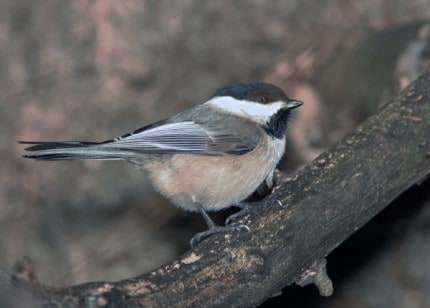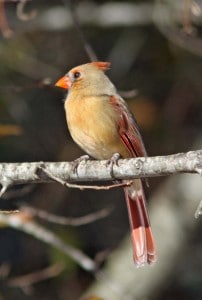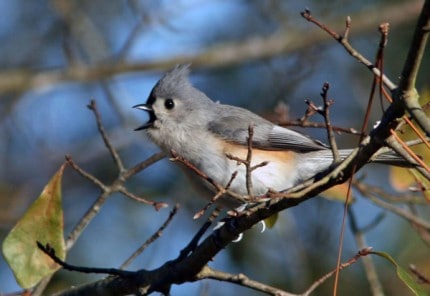
(Chelsea Update would like to thank Tom Hodgson and the Waterloo Natural History Association for the information and photos in this story.)
It’s always fun to see those “sometimes” feeder birds that only come by every two or three years, or the truly rare ones that only appear every 10 years or so.
But the most dependable are the common neighborhood birds that are with us year after year. The rest of the year I may see them flitting through the yard or hear them singing high in the tree tops. But in winter when I fill my feeders, I can enjoy them from the comfort of my living room.

The northern cardinal is one of my favorites, and I may not be alone in that regard as the cardinal is the state bird of seven U.S. states, more than any other species. The northern cardinal is somewhat of a misnomer, as it was originally primarily a southern species. Over the last 50 years, it has expanded its range northward until it is now common as far north as southern Canada. It is named for the bright red plumage of the male, which resembles the red robes of Roman Catholic Cardinals.
The male is brilliant red the year around, but never looks brighter than when it is perched on a snowy branch in winter. The female is a more buff color with a pink bill. The heads of both are adorned with pointed crests.
The male cardinal can be somewhat of a nuisance as well. He is highly territorial and will even battle his own reflected images in windows and automobile side-mirrors. Once he has discovered his reflection, often nothing short of covering the reflective surface will dissuade him. The cardinal is one of the earliest to begin singing as spring approaches, cranking up his melodious, whistling call as early as February. To learn more about the cardinal’s song click here.
Although they sing from the tree tops, they usually prefer to feed on the ground. Their heavy beaks can easily crack open sunflower seeds, their favorite feeder food.

Although the tufted titmouse somewhat resembles a small gray cardinal, they are actually more closely related to chickadees. They nest in old woodpecker holes or man-made nest boxes. Titmouse are shy birds that are attracted to feeders for the sunflower seeds. They fly in, quickly retrieve a seed then just as quickly fly away to eat it in the protection of a tree or shrub. They also store seeds in the cracks of tree bark for future use, and they are early singers. The male’s peter, peter, peter call can be heard in February as well. Click here to listen to selected tufted titmouse calls.
Black-capped chickadees may be the boldest of all the feeder birds. They will continue to retrieve seed from feeders even while they are being refilled. With some effort, they can even be trained to eat from your hand, although the process takes some time and patience. I have done this by putting a large-brimmed straw hat on broom and mounting it outside near the feeder.
Sprinkle sunflower seed on the brim and the chickadees will land on the hat and retrieve the seeds. Once they are making regular trips to the hat, put the hat on your head and they will continue to visit. Next put some seed in your hand and they will soon light on your hand as well.
Once the chickadees are comfortable feeding from your hand, other species may get the idea, too.
The chickadee-dee-dee call that gives this bird its name is not the black-cap’s song, but a call note. The song is a plaintive two-note, clear whistle. Click here to listen to chickadee sounds.











